Kenneth C. Davis's Blog, page 60
March 12, 2017
When Irish Eyes Were Not Smiling-The Bible Riots
(This is a revised version of a post that originally appeared on March 17, 2012)
A reminder once more that the “dangerous, dirty, job-stealing” immigrants were once Irish and Catholic.
It is the day for the “wearing of the green,” parades and an unfortunate connection between being Irish and imbibing. For the day, everybody feels “a little Irish.”
But it was not always a happy go lucky virtue to be Irish in America. Once upon a time, the Irish –and specifically Irish Catholics– were vilified by the majority in White Anglo-Saxon Protestant America. The Irish were considered the dregs by “Nativist” Americans who leveled at Irish immigrants all of the insults and charges typically aimed at every hated immigrant group: they were lazy, uneducated, dirty, disease-ridden, a criminal class who stole jobs from Americans. And dangerous. The Irish were said to be plotting to overturn the U.S. government and install the Pope in a new Vatican.
One notorious chapter in the hidden history of Irish-Americans is left out of most textbook– the violently anti-Catholic, anti-Irish “Bible Riots” of 1844.
In May 1844, Philadelphia –the City of Brotherly Love– was torn apart by a series of bloody riots. Known as the “Bible Riots,” they grew out of the vicious anti-immigrant and anti-Catholic sentiment that was so widespread in 19th century America. Families were burned out of their homes. Churches were destroyed. And more than two dozen people died in one of the worst urban riots in American History.
You can read more about America’s history of intolerance –religious and otherwise– in this Smithsonian essay, “America’s True History of Religious Tolerance.”
March 8, 2017
Who Said It? (3/8/2017)
President Franklin D. Roosevelt, “Fireside Chat on Banking” (March 12, 1933)
Eight days after his inauguration, President Franklin D. Roosevelt gave his first national radio address or “fireside chat,” broadcast directly from the White House.

President Franklin D. Roosevelt Broadcasting his First Fireside Chat Regarding the Banking Crisis, from the White House, Washington, D.C.National Archives and Records Administration (6728517).
“We had a bad banking situation. Some of our bankers had shown themselves either incompetent or dishonest in their handling of the people’s funds. They had used the money entrusted to them in speculations and unwise loans. This was, of course, not true in the vast majority of our banks, but it was true in enough of them to shock the people for a time into a sense of insecurity and to put them into a frame of mind where they did not differentiate, but seemed to assume that the acts of a comparative few had tainted them all. It was the Government’s job to straighten out this situation and do it as quickly as possible. And the job is being performed.”
Source and Complete Text- Franklin D. Roosevelt: “Fireside Chat on Banking,” March 12, 1933. Online by Gerhard Peters and John T. Woolley, The American Presidency Project.
“At the time, the U.S. was at the lowest point of the Great Depression, with between 25 and 33 percent of the work force unemployed. The nation was worried, and Roosevelt’s address was designed to ease fears and to inspire confidence in his leadership. Roosevelt went on to deliver 30 more of these broadcasts between March 1933 and June 1944. They reached an astonishing number of American households, 90 percent of which owned a radio at the time.
Journalist Robert Trout coined the phrase “fireside chat” to describe Roosevelt’s radio addresses, invoking an image of the president sitting by a fire in a living room, speaking earnestly to the American people about his hopes and dreams for the nation.”
March 4, 2017
Greatest American Speech?
On March 4, 1865, Abraham Lincoln delivered his second inaugural address. Just 701 words long, Lincoln’s Second Inaugural Address took only six or seven minutes to deliver. And yes, it is the greatest American speech.
One-eighth of the whole population were colored slaves, not distributed generally over the Union, but localized in the southern part of it. These slaves constituted a peculiar and powerful interest. All knew that this interest was somehow the cause of the war.
Source and Complete Text: The Avalon Project
At a White House reception, President Lincoln encountered Frederick Douglass. “I saw you in the crowd today, listening to my inaugural address,” the president remarked. “How did you like it?” “Mr. Lincoln,” Douglass answered, “that was a sacred effort.” (Source: Gilder Lehman Institute of American History)
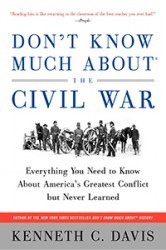
Don’t Know Much About the Civil War (Harper paperback, Random House Audio)
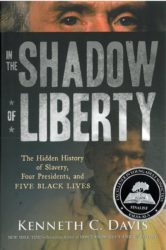
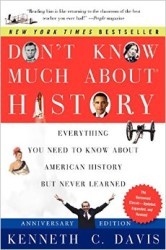
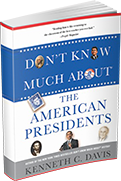
Don’t Know Much About® the American Presidents (Hyperion Paperback-April 15, 2014)
February 27, 2017
Who Said It (2/27/2017)
Abraham Lincoln, Second Inaugural Address (March 4, 1865)

Photograph of Abraham Lincoln’s second inaugural. Lincoln is at the very center of the picture surrounded by dignitaries.
Credit: Image courtesy of American Memory at the Library of Congress.
He now wills to remove, and that He gives to both North and South, this terrible war, as the woe due to those by whom the offence came, shall we discern therein any departure from those divine attributes which the believers in a Living God always ascribe to Him? Fondly do we hope — fervently do we pray — that this mighty scourge of war may speedily pass away. Yet, if God wills that it continue, until all the wealth piled by the bond-man’s two hundred and fifty years of unrequited toil shall be sunk, and until every drop of blood drawn with the lash, shall be paid by another drawn with the sword, as was said f[our] three thousand years ago, so still it must be said “the judgments of the Lord, are true and righteous altogether”
Source and Complete Text: Abraham Lincoln Second Inaugural Address
Read more about Lincoln and the Civil War

Don’t Know Much About® the American Presidents (Hyperion Paperback-April 15, 2014)

Don’t Know Much About the Civil War (Harper paperback, Random House Audio)
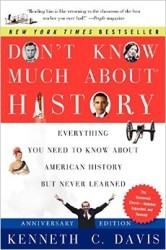
February 21, 2017
“Best of the Best”-ALSC
In the Shadow of Liberty has been named to the “Best of the Best” list for Older Readers by the Association for Library Service to Children (ALSC) of the American Library Association (ALA)
“Each year a committee of the Association for Library Service to Children (ALSC) identifies the best of the best in children’s books. According to the Notables Criteria, ‘notable’ is defined as: Worthy of note or notice, important, distinguished, outstanding. As applied to children’s books, notable should be thought to include books of especially commendable quality, books that exhibit venturesome creativity, and books of fiction, information, poetry and pictures for all age levels (birth through age 14) that reflect and encourage children’s interests in exemplary ways.”
—Notable Children’s Books –2017 Association for Library Services to Children
This is a great honor. The complete list can be found here.
February 19, 2017
Who Said It?
George Washington, Last Will and Testament (dated July 9, 1799). George Washington died on December 14, 1799.
And to my Mulatto man William (calling himself William Lee) I give immediate freedom; or if he should prefer it (on account of the accidents which hae befallen him, and which have rendered him incapable of walking or of any active employment) to remain in the situation he now is, it shall be optional in him to do so: In either case however, I allow him an annuity of thirty dollars during his natural life, whic shall be independent of the victuals and cloaths he has been accustomed to receive, if he chuses the last alternative; but in full, with his freedom, if he prefers the first; & this I give him as a testony of my sense of his attachment to me, and for his faithful services during the Revolutionary War.

Portrait of George Washington, Gilbert Stuart
William Lee was purchased by George Washington from a neighbor in October 1767. “Billy” Lee served Washington as personal attendant for decades, including every day of the Revolution. He attended Washington in Philadelphia in 1787 when the Constitution was debated and went to New York in 1789 to serve the first President. Practically crippled after a series of accidents, Lee was forced to return to Mount Vernon where he lived out his days.
“George Washington prepared his will alone, without, as he attested, any ‘professional character’ being ‘consulted’ or having ‘any Agency in the draught.’ He dated the will, the work of many ‘leisure hours,’ the ‘ninth day of July’ in 1799, probably the date that he finished making the final copy….His executors presented the new will for probate within a month, on 10 January 1800, to the Fairfax County Court, in whose custody it remains. A few days thereafter the will was printed in Alexandria. It then circulated throughout the country in pamphlet form.”
William Lee was the only person enslaved by Washington who was emancipated immediately upon Washington’s death, as the will stipulated. He remained at Mount Vernon until his death, the date of which is not known. His remains are presumed to be buried in the African American burial ground at Mount Vernon.
The complete story of William Lee and his relationship with Washington is told in my recent book, In the Shadow of Liberty: The Hidden History of Slavery, Four Presidents, and Five Black Lives.

Don’t Know Much About® Executive Order 9066
On this date- February 19, 1942 – a different kind of infamy

Dorothea Lange
In this 1942 Dorothea Lange photograph from the book “Impounded,” a family in Hayward, Calif., awaits an evacuation bus.
Franklin D. Roosevelt famously told Americans when he was inaugurated in 1933:
The only thing we have to fear is fear itself
But on February 19, 1942 –a little more than two months after the attack on Pearl Harbor— President Roosevelt allowed America’s fear to provoke him into an action regarded among his worst mistakes. He issued Executive Order 9066.
The result of this Executive Order was the policy of “relocating” some 120,000 Japanese Americans, and a smaller number of German and Italian Americans, into “internment camps.”
I have written about the subject of the internment of the Japanese American population in the past. I relink these today, including this post on the birthday of Ansel Adams, who photographed the internment camp at Manzanar, and another on photojournalist Dorothea Lange, who also documented the period. Both of these posts include links to other resources on the history of “Internment.”
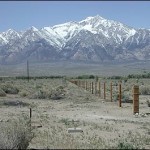
Photo: (National Park Service, Jeffery Burton, photographer
Among these resources is a site devoted to the War Relocation Camps –a Teaching With Historic Places Lesson Plan from the National Park Service called “When Fear Was Stronger than Justice.”
Of course, these issues are once again at the top of the news:
“Trump Camp’s Talk of Registry and Japanese Internment Raises Muslim Fears” (New York Times, November 17, 2016)
It raises the fears of anyone who knows what “Internment” means. This is an update of a post published in February 2015 but reposted today in light of comments made by a prominent supporter of president-elect Trump, as reported in the New York Times.
January 29, 2017
“Best of the Best”-ALSC
In the Shadow of Liberty has been named to the “Best of the Best” list for Older Readers by the Association for Library Service to Children (ALSC) of the American Library Association (ALA)
“Each year a committee of the Association for Library Service to Children (ALSC) identifies the best of the best in children’s books. According to the Notables Criteria, ‘notable’ is defined as: Worthy of note or notice, important, distinguished, outstanding. As applied to children’s books, notable should be thought to include books of especially commendable quality, books that exhibit venturesome creativity, and books of fiction, information, poetry and pictures for all age levels (birth through age 14) that reflect and encourage children’s interests in exemplary ways.”
—Notable Children’s Books –2017 Association for Library Services to Children
This is a great honor. The complete list can be found here.
January 14, 2017
Who Said It (1.14.2017)
Virginia Statute for Religious Freedom enacted on January 16, 1786. That date is now regularly marked in the United States as Religious Freedom Day. Presidential Proclamation for Religious Freedom Day, 2017.

Thomas Jefferson. “An Act for Establishing Religious Freedom,” 16 January 1786. Manuscript. Records of the General Assembly, Enrolled Bills, Record Group 78. Lab# 07_0071_01. Image courtesy the Library of Virginia
“No man shall be compelled to frequent or support any religious worship, place, or ministry whatsoever, nor shall be enforced, restrained, molested, or burthened (sic) in his body or goods, nor shall otherwise suffer on account of his religious opinions or belief …”
The original language of this legislation was drafted by Thomas Jefferson in 1776. His draft is lost. Here is the full text of the act as passed (Source:Monticello).
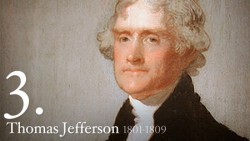
Thomas Jefferson, third president (Source: White House)
James Madison later revised the bill, and under his direction, it became part of Virginia law in 1786 — a year before the U.S. Constitution was drafted.
Madison later called upon these ideas when he drafted what became the 1st Amendment to the Constitution.
Jefferson considered this law –along with writing the Declaration of Independence and founding the University of Virginia — as his three most significant accomplishments. These three achievements are engraved on his tombstone.
Read more about the Virginia Statute for Religious Freedom at Learning Resources from Monticello.
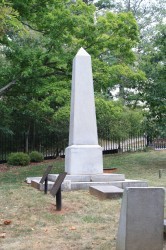
Thomas Jefferson’s Grave Marker at Monticello
January 6, 2017
Who Said It (1/6/2017)
President George Washington “First Annual Message on the State of the Union” (January 8, 1790)

Nor am I less persuaded that you will agree with me in opinion that there is nothing which can better deserve your patronage than the promotion of science and literature. Knowledge is in every country the surest basis of public happiness. In one in which the measures of government receive their impressions so immediately from the sense of the community as in ours it is proportionably essential.
To the security of a free constitution it contributes in various ways – by convincing those who are intrusted with the public administration that every valuable end of government is best answered by the enlightened confidence of the people, and by teaching the people themselves to know and to value their own rights; to discern and provide against invasions of them; to distinguish between oppression and the necessary exercise of lawful authority; between burthens proceeding from a disregard to their convenience and those resulting from the inevitable exigencies of society; to discriminate the spirit of liberty from that of licentiousness – cherishing the first, avoiding the last – and uniting a speedy but temperate vigilance against encroachments, with an inviolable respect to the laws.
Source and Complete Text: Online by Gerhard Peters and John T. Woolley, The American Presidency Project.



